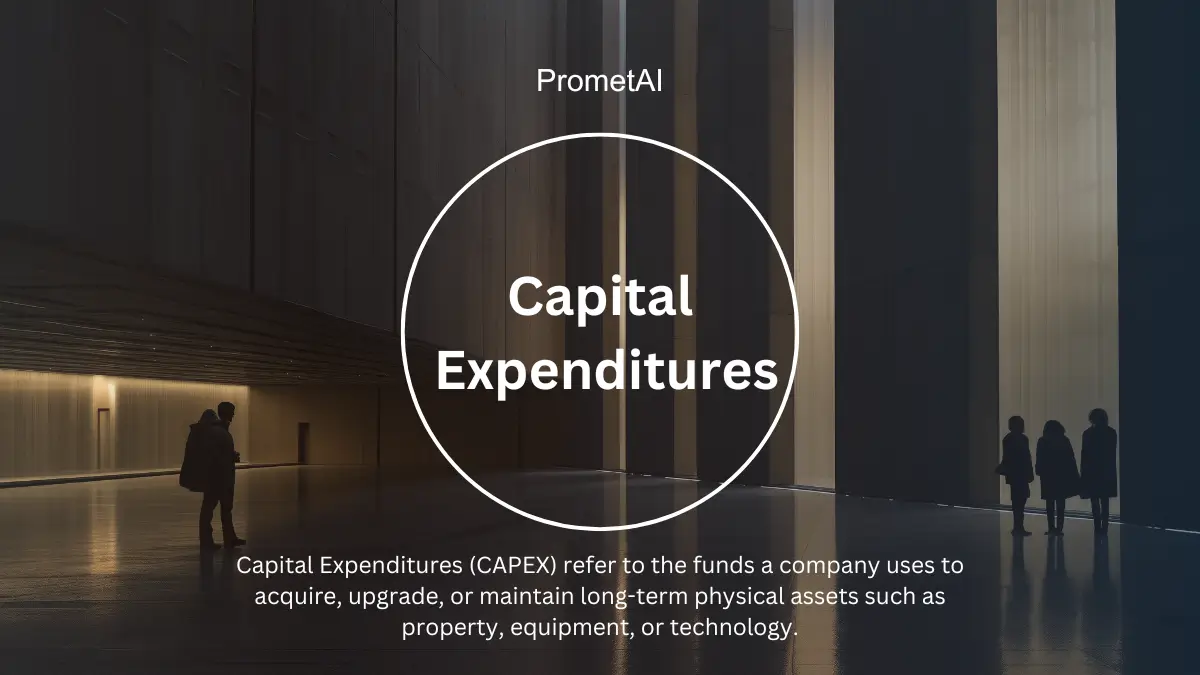Capital Expenditures (CAPEX) are funds spent by a business to acquire, upgrade, or extend the life of long-term assets. These include tangible items such as buildings, machinery, equipment, and infrastructure that are not consumed within a single fiscal year. Instead of being expensed immediately, CAPEX is capitalized and depreciated gradually, reflecting the asset’s usage and contribution to operations over time.
Understanding CAPEX helps stakeholders evaluate how a company is investing for the future and whether those investments align with strategic goals or operational needs.
What Does CAPEX Include?
Typical CAPEX items include:
Purchases of fixed assets like land, factories, manufacturing equipment, vehicles, or data centers
Upgrades or expansions of existing infrastructure (e.g., machinery enhancements or building extensions)
Technology investments such as enterprise software, servers, or digital transformation projects - provided they meet capitalization criteria
Notably, routine repairs and maintenance are not CAPEX. These are treated as operating expenses because they do not increase the asset’s value or lifespan.
Tip: The distinction between capital expenditure and maintenance can affect reported profits, cash flow, and taxes. So it’s important to classify these expenses correctly.
How to Calculate CAPEX?
CAPEX isn’t always itemized in financial statements, but it can be estimated using the company’s balance sheet and depreciation figures from the cash flow statement.
\text{CAPEX} = \text{PP&E (Current Period)} – \text{PP&E (Prior Period)} + \text{Depreciation}.
This formula reflects the net new investment in fixed assets during the reporting period.
PP&E (Property, Plant & Equipment) shows the value of long-term physical assets.
Depreciation is added back because it reduces PP&E over time, and CAPEX must account for total investment, not just net change.
This calculation is especially useful for analysts assessing how much a company is reinvesting into its operations year over year.
CAPEX vs. OPEX
Understanding the distinction between Capital Expenditures (CAPEX) and Operating Expenses (OPEX) is crucial in budgeting, forecasting, and financial modeling.
CAPEX
Long-term investments in physical assets
Capitalized and depreciated over time
Affects the balance sheet and cash flow from investing activities cash flow
Examples: buildings, machinery, vehicles
OPEX
Day-to-day expenses required to run the business
Expensed immediately in the income statement
Affects the P&L (profit & loss) and operating
Examples: rent, salaries, utilities, repairs
CAPEX impacts a company’s asset base, while OPEX affects short-term profitability. Both are necessary, but serve very different purposes.
CAPEX vs. PP&E and Fixed Assets
It’s easy to confuse CAPEX with PP&E or fixed assets, but they refer to different things:
Think of it like this: CAPEX builds PP&E. Over time, as new investments are made and depreciation reduces asset value, PP&E changes to reflect the evolving asset base.
Capital Expenditures Example
Let’s say a company’s PP&E increased from $5 million to $6 million over the course of a year, and depreciation for that year was $500,000.
CAPEX=6M−5M+0.5M=1.5M\text{CAPEX} = 6M - 5M + 0.5M = 1.5MCAPEX=6M−5M+0.5M=1.5M.
This means the company invested $1.5 million in new or upgraded long-term assets during that period - an indicator of active reinvestment in its infrastructure or capacity.
